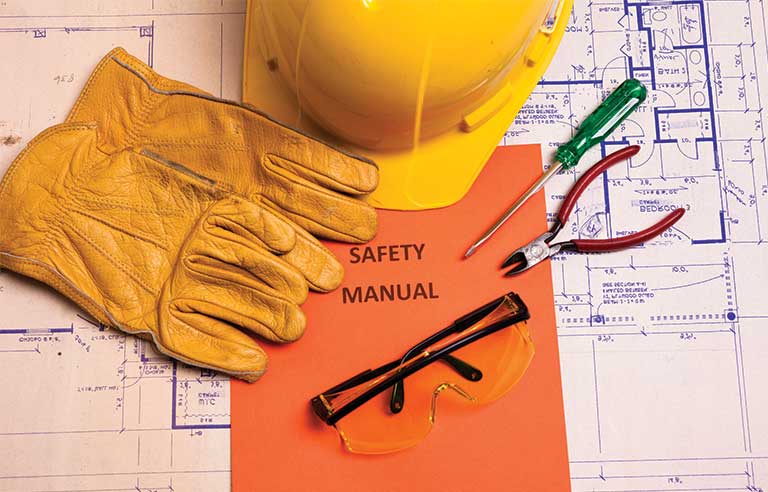A construction site is an atmosphere of controlled chaos, outstanding headway and inherent risk. Although hard hats represent caution, a true safety culture extends beyond sporting the appropriate gear. Safety should be at the forefront of every project, with every worker committed to their and their colleagues’ well-being. Of course, building this type of workplace culture requires support and guidance from leadership and collaboration among crew members.
Understanding the Risks and Dangers of Construction Sites
The United States construction workforce accounts for 9% of all fatal and 20% of all non-fatal occupational injuries. Likewise, over 60,000 construction-related deaths occur annually worldwide. Most often, frequent on-site activity between crews, equipment and heavy materials increases the risk.
For example, falls are the top reason construction workers die, many of which happen on scaffolding. Walking on compromised planks, toeboards and guardrails is particularly dangerous, as is exceeding weight limits and using ladders to reach higher points.
Struck-by accidents also pose a significant safety risk. These occurrences led to 150 deaths and 14,000 non-fatal injuries in the construction sector in 2020.
A Multi-Pronged Approach to Construction Safety
Construction safety requires ongoing investment and a multifaceted approach. Everyone must adopt a sense of ownership and be proactively safe in every task. The following tips can help managers and workers implement safety measures so they become second nature.
Comprehensive Training
Ninety percent of construction site accidents result from human error and unsafe behaviors. Of those incidents, 49% involve a lack of awareness or assuming a situation is less dangerous than it is. Comprehensive construction training can help mitigate many of these risks.
Safety training equips managers and equipment operators with the proper skills and expertise to prevent injury and death. These modules should cover hazard identification, management protocols, the importance of personal protective equipment and how to handle emergencies. However, training is not a one-time circumstance — workers should undergo regular safety classes to stay informed and current with best practices.
Documentation and Investigation
When workplace incidents transpire, construction companies must have clear reporting and investigation protocols in place. This is not solely for managers to follow, though — staff must also know how to act, including who to turn to for emergency assistance.
Reporting procedures should be comprehensive enough to determine why and how an incident happened, the contributing factors, and ways to prevent it from occurring again. The process might include interviewing witnesses and analyzing the scene for more information, taking photographs and documenting evidence, and conducting a thorough assessment.
Technology Integration
Cutting-edge technology is enabling greater workplace safety in the construction industry. To protect crews, companies should invest in innovations like robotics for high-risk jobs, drones for aerial inspections, and on-site cameras for monitoring hazards and ensuring compliance.
Utilizing predictive analytics powered by artificial intelligence (AI) is another way to protect construction workers from dangerous machinery and equipment malfunctions. These tools use special algorithms to study patterns of technical failures, notifying repair specialists of potential breakdowns or accidents in real time.
The technology also has learning capabilities, which enable it to improve accuracy when fed more insights. This allows technicians to get ahead of problems before they become critical.
Work-Life Balance
Construction work is taxing, especially because of the required physical stamina, high-pressure work environments and long hours. One study even showed that 16% of U.S. construction workers experienced significant mental distress with a heightened risk of death. As such, managers should never underestimate a healthy work-life balance.
Leadership can create a proactive safety culture by providing employees with mental health support and resources, including counseling benefits and peer support. Open communication about this matter can also encourage workers to seek help to address workplace stressors. Of course, offering paid time off to recuperate from the job’s physical, psychological, and emotional constraints can combat fatigue and improve mental fitness.
Recognition and Reward
Recognizing and rewarding team members for following safety protocols is an impactful and low-cost way to reinforce positive behaviors and encourage others to conduct themselves the same way. Yet, demonstrating appreciation for top-tier performance is often a missed opportunity for leaders.
According to Gallup, just one in three U.S. workers agrees they have received praise for a job well done in the last seven days. When managers publicly recognize and reward their employees, they instill a greater sense of accomplishment, increase productivity and boost retention.
Ongoing Improvements
Every project and site differs from the next. Therefore, construction managers must continuously review and revise safety prevention protocols by reworking policies, enhancing training, and improving reporting and investigatory procedures. Encouraging workers to deliver feedback on current safety practices will also help everyone identify risks more easily and enable managers to home in on the most essential process improvements.
Construction Safety Requires Commitment and Cooperation
Protecting the construction workforce is a team effort. Leadership must relay and reinforce the importance of following safety procedures, while staff must put these protocols into practice daily. Doing so is more than meeting compliance standards, though — it is instilling a true culture of care.

